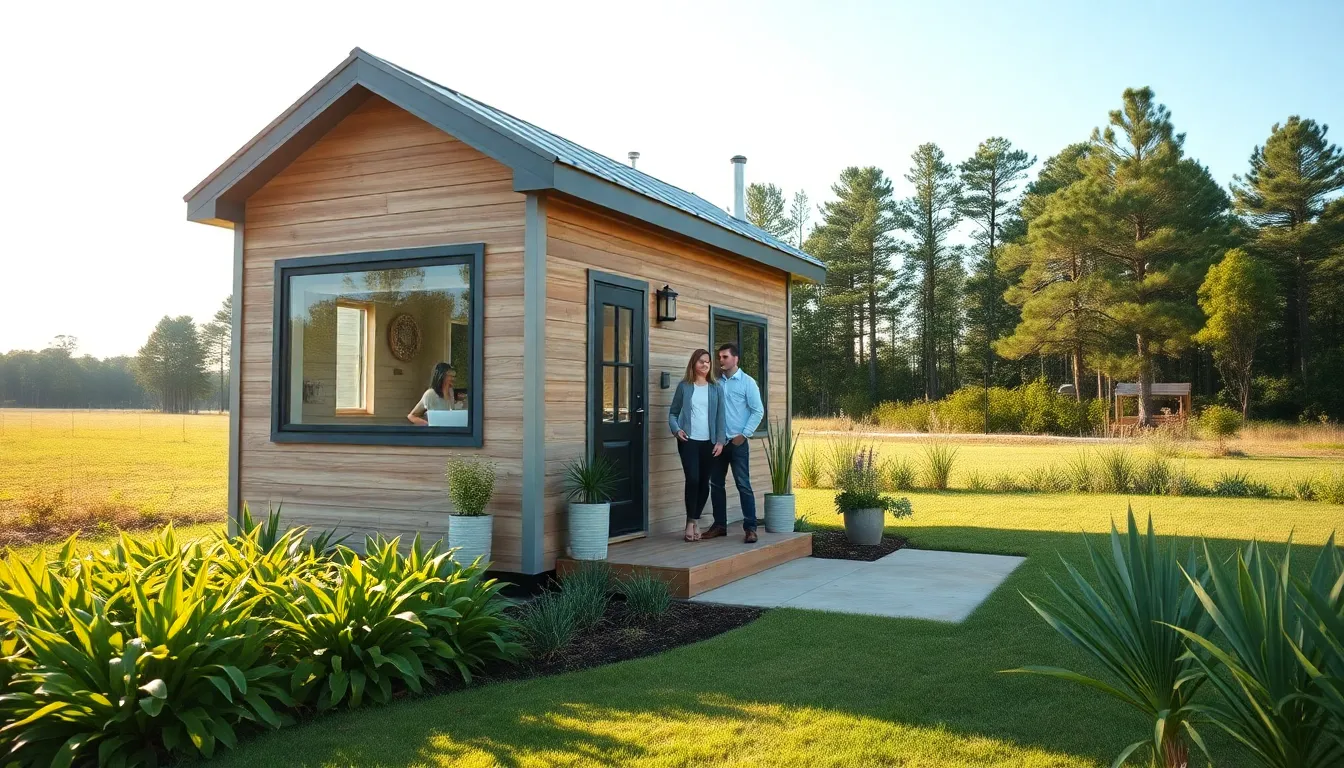Imagine walking into a kitchen bustling with the sounds of sizzling pans and laughter, where culinary creativity meets community spirit. Communal kitchens are not just about sharing space; they’re about sharing experiences, flavors, and sometimes, a few too many questionable cooking experiments. These vibrant hubs bring together food enthusiasts, budding chefs, and even the occasional microwave magician, all united by a love for good grub.
Table of Contents
ToggleOverview of Communal Kitchens
Communal kitchens serve as collaborative cooking spaces where individuals share their passion for food. These kitchens attract food enthusiasts from diverse backgrounds, promoting the exchange of recipes and cooking techniques. In these environments, community members bond over a shared love for culinary innovation.
Cooking together often leads to new friendships and strengthens social networks. Many communal kitchens host events that encourage interaction, such as cooking classes or themed dinners. Participants gain hands-on experience while learning from one another, boosting their culinary skills.
Facilities vary widely, with some designed for professional chefs and others aimed at home cooks. Equipment typically includes commercial-grade stoves, ovens, and ample prep surfaces. Spaces often provide storage for ingredients, utensils, and personal cooking tools.
Cost-effectiveness represents another key feature. By sharing resources, users save on rental fees and equipment expenses. Many communal kitchens operate on membership or hourly rental models, making them accessible to a broader audience.
In addition, these kitchens showcase local food initiatives, supporting sustainable practices by prioritizing farm-to-table principles. They might collaborate with local farmers or markets, further strengthening community ties. By emphasizing shared experiences, communal kitchens foster a vibrant atmosphere rich with laughter, learning, and delicious food.
Benefits of Communal Kitchens
Communal kitchens offer numerous advantages that enhance culinary experiences and foster community engagement.
Social Interaction
Social interaction thrives in communal kitchens. Cooking together creates opportunities for bonding over shared recipes and techniques. Participants frequently exchange tips, which enhances their culinary skills. New friendships naturally develop in this collaborative space, leading to a strong sense of belonging. Events like cooking classes and themed dinners encourage interaction among diverse groups. Engaging in these activities fosters a welcoming atmosphere. Moreover, laughter and good conversations contribute to a lively environment. Participants often find joy in learning from one another, resulting in lasting connections within their local food communities.
Cost Efficiency
Cost efficiency stands out as a significant benefit of communal kitchens. Users save money on kitchen rentals by sharing resources, including equipment and ingredients. Many communal kitchens operate on membership or hourly rental models, making participation affordable. Individuals frequently have access to commercial-grade equipment that may be financially out of reach in personal kitchens. This setup allows both professional chefs and home cooks to work in fully equipped spaces without high overhead costs. Families can also minimize grocery expenses by sharing food items during communal cooking events. Overall, communal kitchens present a viable option for cooking enthusiasts seeking financial relief while enjoying culinary activities.
Types of Communal Kitchens
Communal kitchens come in various forms, each serving unique purposes and target audiences. Understanding these types helps in navigating options that best fit individual needs.
Residential Communal Kitchens
Residential communal kitchens often appear in apartment complexes or co-housing arrangements. These kitchens provide residents with shared cooking facilities, promoting culinary collaboration among neighbors. Users enjoy the benefits of a well-equipped kitchen without the personal investment in appliances. Additionally, hosting potlucks and cooking classes fosters community spirit, bringing residents together over shared meals. Such kitchens typically feature basic cooking amenities and dining areas designed for social interaction.
Commercial Communal Kitchens
Commercial communal kitchens cater to food entrepreneurs and caterers seeking affordable access to professional-grade equipment. These spaces often operate as rental facilities for culinary businesses or pop-up restaurants. Entrepreneurs benefit from shared resources, significantly reducing overhead costs associated with running a full kitchen. Moreover, many offer compliant environments for food safety regulations, ensuring a secure space for cooking. Networking opportunities abound in these kitchens, as chefs and food creators collaborate and exchange ideas, enhancing their culinary ventures.
Challenges Faced by Communal Kitchens
Communal kitchens encounter several challenges that can impact their operations and user experience.
Management and Organization
Effective management is crucial for communal kitchens to operate smoothly. Coordination among diverse users can lead to scheduling conflicts, especially during peak hours. Clear communication about kitchen use helps mitigate misunderstandings. Establishing guidelines for reservations and sharing appliances promotes a harmonious environment. Trained staff often play a vital role in managing the space and ensuring users adhere to established protocols. Furthermore, regular feedback from users aids in refining kitchen operations, helping to create a more efficient and enjoyable experience for everyone involved.
Hygiene and Safety Concerns
Maintaining hygiene standards in communal kitchens poses a significant challenge. Shared spaces require strict adherence to cleanliness procedures to prevent foodborne illnesses. Regular inspections and sanitation protocols should be implemented to ensure safety. Educating users about proper food handling and storage practices reinforces a commitment to health standards. Moreover, providing accessible cleaning supplies helps encourage users to maintain a tidy environment. Addressing these concerns effectively is essential for fostering trust and a positive atmosphere within communal kitchens.
Conclusion
Communal kitchens stand as a testament to the power of food in bringing people together. They create spaces where culinary passions flourish and friendships blossom. By sharing resources and experiences, individuals not only enhance their cooking skills but also build lasting connections within their communities.
The vibrant atmosphere of laughter and learning makes these kitchens a unique hub for creativity. Despite facing challenges like scheduling conflicts and hygiene concerns, effective management can ensure a rewarding experience for all users. As communal kitchens continue to grow in popularity, they play an essential role in fostering community spirit while promoting sustainable culinary practices.







